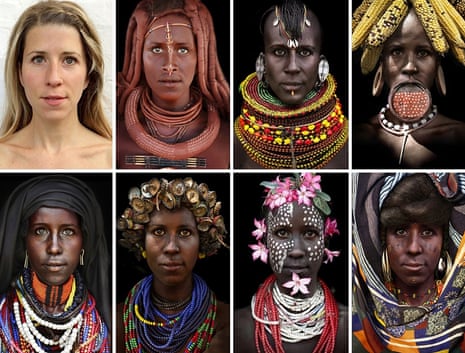Apparently to “raise awareness” of African women and their “secluded cultures”, a Hungarian journalist photoshopped her own face onto portraits of black women.
But her project, posted online in early December, sparked widespread criticism. In the face of mounting outrage, Boglarka Balogh took the images down yesterday, apologising but saying her “intention was 100% pure with this tribal art”.
You could look at this as a case of hi-tech blackface, an incident in which yet another white person thinks it’s amusing to dress up as black, when many black people don’t have that sort of luxury.
But Balogh wasn’t trying to make fun of black people or parody them like Halloween party-goers do every year. She was actually trying to help.
When faced with the sort of hapless racism at the heart of Balogh’s project – when many people claim that they “can’t see why it’s offensive” and that she was “trying to help” – I often use a thought experiment. Here goes:
Imagine that an alien comes down to Earth. She has no knowledge of social or historical context. She is ignorant about race and racism. Her human host shows her Balogh’s photos. The alien is not offended.
In fact, she doesn’t see the point of the photos. They mean nothing. When her host says the photos have caused some offense the alien says, “Please tell me the meaning of these images.”
The human explains that on this planet there are some people who are fair-skinned and others who are dark-skinned. All of them are equal.
But over time, the fair-skinned group created an economic system that took labour, resources and land from darker-skinned people with little compensation. This lasted hundreds of years and had terrible effects on the darker people and their environments.
The human explains that crucial elements of the system remain in place today. She tells the alien that the people in Balogh’s photos and others in places, now occupied primarily by fair-skinned people, are doing especially badly and their cultures are at risk of disappearing.
The human tells the alien that by pretending she has African skin, Balogh is drawing on this history. Balogh is using her images to say, “Despite our terrible past, we are all the same, it is just our skin that is different.”
The human tells the alien that many dark-skinned people are unhappy with Balogh. The alien scratches her head and asks why.
The human sighs and says that during the times when the economic system was at its most cruel, the fair-skinned people invented a form of entertainment in which they painted their fair faces black so that they would look like an exaggerated version of the darker people.
This form of entertainment happened in some parts of the world, but the images were exported far and wide and it influenced the mindsets of many fair-skinned people.
It was called “blackface”, and it made darker people sad and angry even though the fair-skinned people said it was just in good fun.
The dark people knew the laughter was at their expense. In fact, the fair-skinned people made a rule that dark people could only be entertainers in front of fair people if they painted their faces black or acted silly.
Now the alien understands why the darker people are upset about the pictures. She asks why some fair-skinned people continue to behave this way – don’t they know their history?
